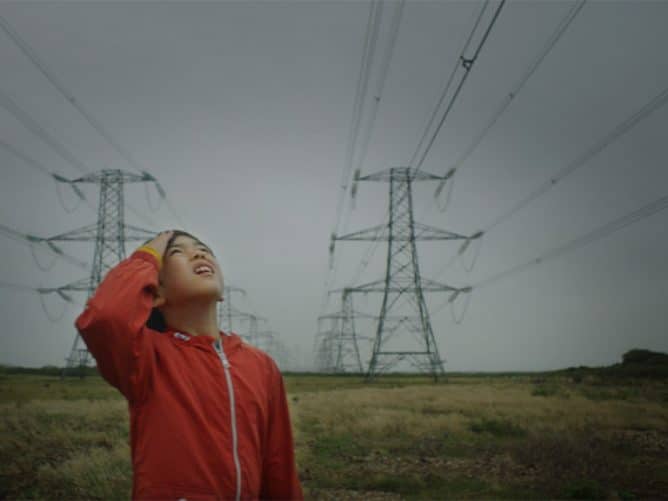




Dir.: Jerry Rothwell; Documentary with Amrit, Joss, Ben, Emma, Jestina, Jim Fujiwara; UK/US 2020, 82 min.
Autism is a condition that restricts social interaction. But Jerry Rothwell explores how those affected do not necessary lead less rich lives as a result of being on the spectrum.
Autism Spectrum Disorder sufferer Naoki Higashida was only 13 when he decided to put his feelings down on paper, and this book forms the basis of Jerry Rothwell’s engaging film. Now in his twenties, Naoki declined to appear in the film so Rothwell chose five other cases to illustrate the near impossible barriers these young adults face.
Perhaps closest to Notes on Blindness, Jump, using the translation by David Mitchell (Cloud Atlas) and K.A. Yoshida, who have a child also affected by ASD. It features young autistic Jim Fujiwara, who runs along a beach and is a sort of stand-in for Hagashida, talking about his problems, with the camera of DoP Ruben Woodin Dechamps visualising his locked-in status.
In Noida, India we visit Amrit and her mother. The young woman channels her frustrations into powerful paintings – leading to a solo gallery show. Joss (son of the film’s producers Stevie Lee and Jeremy Dear) lives in Broadstairs where he suffers from emotional problems leading to violent mood swings. More verbal, he is also stuck in time, constantly referring to the house where he spent his early years.
Videos of him on the trampoline underline the words of Higashida’s book: “The reason I jump on the trampoline is that my body seizes up, like being by lightning. I shake off the ropes which tie me down. It is as if my feelings are going upwards to the sky. If I could only flap my wings and fly off to some faraway place.” With great regret, his parents have placed him in a school for his special needs.
In Arlington, Virginia, the filmmakers meet teenage best friends Emma and Ben, who are close allies in their SEN (Special Needs) school. They communicate with friends, teachers and parents via letter-boards, punching in a single letter at a time. “They denied us our Civil Rights” says Ben, talking about their former, not particularly progressive, school.
In Sierra Leone, the filmmakers interview Jestina and her parents, who have had to fight to keep their Freetown school opens. Jestina is one of the lucky few: many autistic children are left to die outside in the bush. But before we classify these people through our European gaze – Elders in African countries believe these kids are ‘bewitched’, it’s worth keeping in mind the Nazis murdered their autistic children in gas chambers.
Jump’s biggest triumph is conveying what it means to be classified as non-verbal ASD. When we look at an object, such as a car, we immediately contact with our memory of cars, and without questioning, it goes into the right category. But many ASD sufferers see only details, which literally jump at them. They cannot ask for help, and become more and more anxiety-ridden as a result.
Jump is not a bible, unlike Higashida’s book, but it illuminates the pathway to understanding the ASD sufferers’ feelings. Atmospheric camerawork combined with the David Charap’s exemplary editing make this journey like an echo from an inner struggle. AS
ON RELEASE FROM 18 June 2021